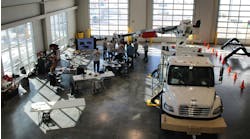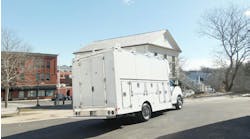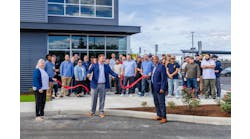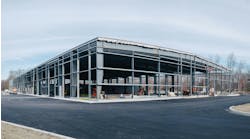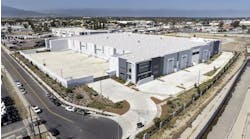Navistar revealed the results of the International SuperTruck II, a project in partnership with the U.S. Department of Energy (DOE). International SuperTruck II demonstrated 16 miles per gallon (MPG) fuel efficiency through hybridization and a 170% improvement in freight efficiency over the 2009 baseline vehicle, the International SuperTruck I. It also proved innovative technical approaches to weight reduction from rolling resistance technologies, aerodynamic improvements, and powertrain technologies designed to deliver premium freight efficiency to assist in reducing U.S. dependency on fossil fuels in the commercial vehicle sector.
International SuperTruck II was built as a hybrid vehicle featuring a combustion engine with high-voltage accessories and technologies, developed in partnership with Bosch. Engine improvements were made in key areas including combustion, friction, gas exchange, and airflow through the engine. A redesigned cylinder head with dual overhead cam engine and enhanced fuel system resulted in a 2% fuel economy improvement when compared to International SuperTruck I. Aftertreatment system improvements included diesel exhausted fluid (DEF) dosing, improved mixing and lower restrictions, new selective catalytic reduction (SCR) formulations for high-NOx reduction and reduced cold-start activation time.
"The team concentrated its design on high-voltage electrification, utilizing hybrid technology on a path toward full electrification that has the potential to be commercialized in fully electric vehicles and improve customers' total cost of ownership (TCO) and business operations," said Russ Zukouski, chief engineer, Global Innovation and Principal Investigator for the Supertruck programs.
Read more: Meijer tests zero-emissions refrigerated trailerThis resulted in a 55% engine brake thermal efficiency, assessed TCO opportunities for individual technologies, and high-voltage electrification efforts modeling hybrid technologies that can be utilized for fully electric vehicles.
"It includes a 100% composite box designed for minimum aerodynamic drag with light weight, integrated cross members, controlled underbody flow with composite aero treatments, next-generation solar panels with connectivity options, and ride height control,” said Dean Oppermann, chief engineer, Advanced Truck.
International SuperTruck II highlighted connectivity with next-generation predictive cruise control, as well as leveraging technologies and information within the larger TRATON Group to explore vehicle-to-everything technologies to enhance safety and vehicle efficiencies.
"Our goal is to continue to advance internal combustion engine technology as efficiently and sustainably as possible until there is parity with zero-emissions vehicles," said Opperman. "Development of both technologies concurrently ensures a smooth transition of technology to best serve customer needs. We are focused on the entire product ecosystem – product development itself, as well as infrastructure charging, service and support of vehicle operation, end of life for batteries."
For more information, please visit www.navistar.com or check out the video below.

